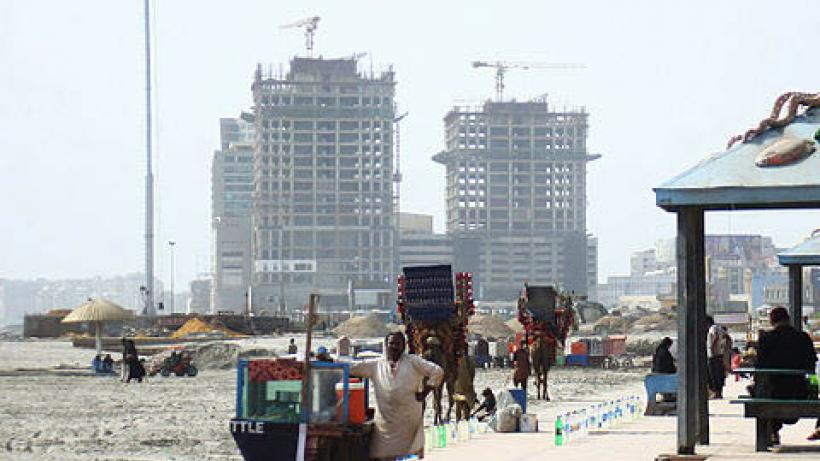
Harnessing technology for public sector reform: Procurement in Pakistan
Procurement decision making and access to information
“Procurement decisions take up 20-25% of my time in a week, and given my other obligations, I cannot afford to spend more time on this activity”, explains Mr. Ashraf, an Executive Engineer in the Communication and Works Department in Punjab. His task at hand today is to procure more printing paper for his subsidiary offices. Ideally, to get a good price, he would find out who all the nearby quality vendors are, what their rates were, and what rates other offices in his district are paying for similar products.
However, when making a purchase decision, a drawing and disbursing officer in Punjab has almost no information at his disposal that can help him make efficient decisions. Gathering the relevant information is a cumbersome task that Mr. Ashraf doesn’t have time to work on, so instead he relies on the quotes and information brought to him by his subordinates. As a result, people like Mr. Ashraf often end up overpaying, sometimes by large amounts.
Since officials can’t compare their purchases to the prices their peers are paying for the same items, prices vary dramatically from office to office. If purchasing officers on the ground lack information, the supervisors tasked with ensuring efficient government procurement face a hopeless task.
Government procurement and legal compliance
With limited revenue and urgent spending needs, the efficient use of the funds available to developing country governments is crucial. The government spends a very large part of its budget on procurement - purchasing goods and services from the private sector. Ensuring the efficiency of public procurement is a key aspect of achieving cost-efficient service delivery. However, a key challenge in improving public procurement is misaligned priorities. The emphasis has changed from ensuring low cost and quality purchases to ensuring legal compliance, which opens the door for gaming and box-ticking.
The first step towards improving the efficiency of procurement, is to focus on measuring and benchmarking procurement outcomes. This allows for the current state of affairs to be determined, exposing whether reforms to the procurement process are working.
The project: Punjab Online Procurement System (POPS)
Our International Growth Centre (IGC) funded project tries to address this procurement policy gap with the Punjab Online Procurement System (POPS). It has been developed and deployed to automate the process of procurement in Punjab and collect detailed procurement data from five administrative departments in over 1,500 public bodies (or ‘cost centers’). This system has been designed in collaboration with the Punjab Information Technology Board (PITB) and the Punjab Procurement Regulatory Authority (PPRA).
“This system has immensely simplified the task of preparing documents for our staff for submission to the Accountant General (AG) Office. It ensures that the documents are complete and prepared quickly, which helps us save a lot of time and energy, as well as the number of visits to the AG Office are also reduced. If documents are complete, our bills are processed more quickly and we can go back and refer to these documents anytime without going through the piles of files in our office”, corroborates Dr. Zahid, Programme Director at a Health Facility in Lahore.
Rollout
In addition, POPS collects data on the characteristics of purchases such as detailed specifications of items being purchased. “It is for this reason that POPS is now being rolled out to three more administrative departments, led by PPRA”, says the Project Lead at PPRA, adding, “It generates very useful statistics that may potentially inform procurement and finance policy in the province. The total cost of procurement in any district, by any department and at any time of the year, can be ascertained, and relevant and timely decisions taken”.
As the initial kinks have been ironed out in the implementation of the project, the interface is now being adopted by more government officers. The rollout has also helped offices become more connected by ensuring they have a computer operator, computer and an active internet connection.
Expansion
Building upon the platform of our project, the government is now expanding the scope of the POPS system’s reach. Extensions include online budget management for quick, efficient aggregation of budget requests from cost centers, compilation of budget decisions, and transparent fund disbursals, creating an online marketplace where vendors sell directly to government through the POPS platform. Being data-driven, the platform also allows for the leveraging of data to conduct audits and decide who to audit, streamlining pre-audit itself.
Tracking policy impact
The POPS system also allows the government to track the progress and impact of policy reforms. We have been piloting the use of financial incentives for officers who improve procurement performance, and the potential for reducing red tape in procurement to improve efficiency. POPS allows researchers and the government to learn together what works. If we can learn how to motivate bureaucrats to achieve financial efficiency, we can free up government resources to improve public service delivery in the province.

